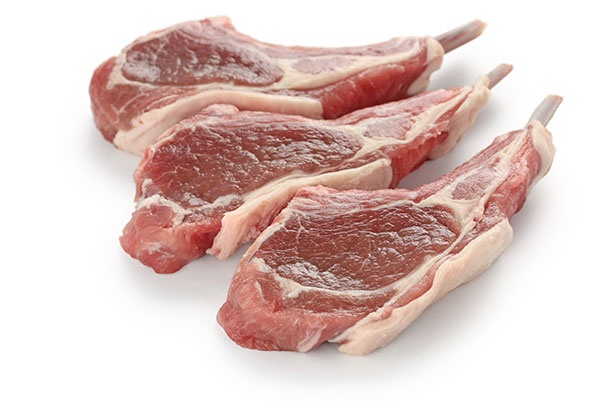Muttonf meat and their benifit
Lamb and Mutton

Both lamb and mutton are very similar types of meat, with one fundamental difference;
- Lamb is from a sheep less than one-year-old
- Mutton is the meat of an adult sheep
Just like beef and pork, there are a variety of popular lamb cuts — perhaps lamb chops are the most popular.
Nutrition Facts
Per 100g, the nutritional profile of ground lamb meat looks something like this (19);
| Nutrient | Amount |
| Calories | 282 kcal |
| Carbohydrate | 0 g |
| Protein | 16.6 g |
| Fat | 23.4 g |
| – Saturated | 10.2 g |
| – Monounsaturated | 9.6 g |
| – Polyunsaturated | 1.9 g |
| – Omega-3 | 420 mg |
| – Omega-6 | 1360 mg |
| Omega 6 to 3 Ratio | 3.2 : 1 |
| Vitamin A | 0% DV |
| Vitamin C | 0% DV |
| Vitamin D | – |
| Vitamin E | 1% DV |
| Vitamin K | 4% DV |
| Thiamin | 7% DV |
| Riboflavin | 12% DV |
| Niacin | 30% DV |
| Vitamin B6 | 6% DV |
| Folate | 5% DV |
| Vitamin B12 | 39% DV |
| Pantothenic Acid | 7% DV |
| Calcium | 2% DV |
| Iron | 9% DV |
| Magnesium | 5% DV |
| Phosphorus | 16% DV |
| Potassium | 6% DV |
| Sodium | 2% DV |
| Zinc | 23% DV |
| Copper | 5% DV |
| Manganese | 1% DV |
| Selenium | 27% DV |
Benefits
Generally speaking, both lamb and mutton are nutritious meat options.
- Because sheep graze on pasture all day, the omega 6 to 3 ratio is very low—and perhaps optimal—compared to other meats (20).
- Lamb contains a broad range of health-protective nutrients, especially zinc, selenium and B vitamins.

Comments